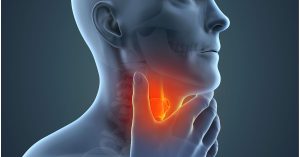Introduction
Head and neck cancer encompasses various types, affecting critical areas such as the oral cavity, throat, voice box, nasal cavity, paranasal sinuses, and salivary glands. In this comprehensive guide, we delve into the intricacies of head and neck cancer, exploring types, symptoms, causes, risk factors, treatment options, diagnostic procedures, and the outlook for those diagnosed.
Types of Head and Neck Cancer
Oral Cavity
The oral cavity type includes cancer in the lips, tongue, gums, cheeks, floor and roof of the mouth, and the area behind wisdom teeth.
Throat (Pharynx)
Throat cancer can manifest in the nasopharynx, oropharynx, and hypopharynx regions, each presenting unique challenges.
Voice Box (Larynx)
This type affects the voice box and vocal cords, along with the epiglottis, responsible for preventing food from entering the airway.
Paranasal Sinuses and Nasal Cavity
Cancer in these areas brings about symptoms related to the nose, eyes, and sometimes the mouth or ears.
Salivary Glands
Cancer in the salivary glands, while rare, involves lumps, pain, facial numbness, and difficulty swallowing.
Note: Other cancers, such as eye, brain, esophageal, thyroid, bone, skin, muscle, and scalp, are classified separately.

Symptoms and Diagnosis
Understanding symptoms is crucial for early detection and effective management.
Oral Cavity Symptoms
Symptoms may include mouth ulcers, pain, difficulty swallowing, lumps in the neck, unexplained weight loss, tooth loss, bad breath, and colored patches.
Pharynx Symptoms
Lumps in the neck, hearing loss, tinnitus, and nasal issues are common symptoms, although some individuals may not display any.
Voice Box Symptoms
Changes in voice, difficulty swallowing, unexplained weight loss, persistent coughing, shortness of breath, and ear pain may indicate laryngeal cancer.
Paranasal Sinuses and Nasal Cavity Symptoms
Issues with the nose, eyes, and sometimes the mouth or ears, including congestion, nosebleeds, decreased sense of smell, and vision problems.
Salivary Glands Symptoms
Lumps or swelling near the jaw, facial pain, numbness, and muscle weakness can signify salivary gland cancer.
Caution: Mouth patches, though often benign, can lead to cancer.

Causes and Risk Factors
Understanding the root causes and risk factors aids in prevention and early intervention.
- Alcohol and Tobacco: Major risk factors, with the CDC highlighting their significant contribution.
- Human Papillomavirus (HPV): Responsible for approximately 70% of oropharyngeal cancers.
- Age and Gender: Men are twice as likely to develop head and neck cancer, and those over 50 face higher risks.
- Betel Nut Use, Epstein-Barr Virus, Radiation, UV Exposure: Additional risk factors contributing to the development of cancer.
Treatment Options
Navigating the treatment landscape is vital for those diagnosed with head and neck cancer.
- Surgery, Radiation, and Chemotherapy: Depending on the type and stage of cancer, these treatments may be employed individually or in combination.
- Clinical Trials: Opportunities for accessing innovative treatments not widely available, offering hope for improved outcomes.
Diagnosis Process
The diagnostic journey involves thorough examinations and various tests to determine the extent of the cancer.
- Medical History and Physical Examinations: Essential components to understanding an individual’s health background.
- Scans (Ultrasound, Nasendoscopy, CT, PET, X-rays, MRI): Imaging techniques crucial for visualizing the affected areas.
- Endoscopy: Conducted under general anesthesia or through transnasal flexible laryngo-esophagoscopy for a closer examination.

Spread and Outlook
Understanding how cancer spreads and the overall outlook is crucial for individuals and their families.
- Metastasis: Head and neck cancer can metastasize to other body parts, impacting prognosis.
- Common Spread to Lymph Nodes: Particularly in the neck, influencing the choice of treatment and outcomes.
- Outlook: Prognosis varies based on the cancer stage, with early-stage oral cancers exhibiting an 80% 5-year survival rate.
- Increasing Long-Term Survival: Advances in treatment contribute to an optimistic outlook for long-term survival.
Summary
In summary, head and neck cancer significantly impact vital areas such as the nose, mouth, and throat. Recognizing symptoms, understanding causes and risk factors, exploring treatment options, and navigating the diagnostic process are crucial steps in managing this condition. Lifestyle choices, including smoking, alcohol consumption, and betel nut use, play a pivotal role in the development of head and neck cancer. Advances in medical research, clinical trials, and a growing emphasis on long-term follow-up care contribute to improving survival rates and overall outcomes for individuals diagnosed with head and neck cancer.




